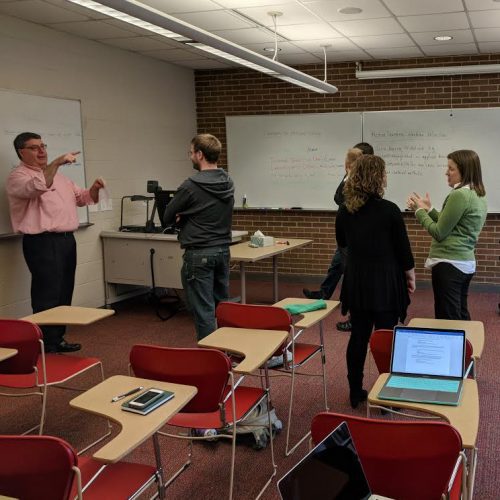Mary Unger publishes book on Black women’s role in literature during the 20th century
Posted June 5, 2025

In the spring of 2018, I worked with a group of faculty to develop and hone student-centered teaching strategies through the Faculty Learning Community on Active Learning. The 10 faculty participants represented seven different departments and brought different levels of teaching experience and expertise to the group.
A Faculty Learning Community (FLC) is an interdisciplinary group of faculty who engage in an active, collaborative program with a curriculum that promotes the enhancement of teaching and learning. An FLC provides an opportunity for faculty to deepen their teaching expertise, to try out new techniques in a safe environment, and to strengthen connections with other faculty members. Evidence shows that the FLC model is effective for faculty development and provides lasting benefits to faculty members and, by extension, to their students.
The inaugural FLC focused on active learning strategies in the college classroom. Active learning strategies engage students during class time and can be used in any disciplinary context. These strategies can lead to improved student learning, increased student motivation and participation, and higher overall student satisfaction. The primary goal of the FLC was to create a space for faculty to learn from their peers about how to implement student-centered techniques.
For each of the five meetings, the faculty members had assigned readings and assignments to complete. (Yes, I gave faculty homework assignments!) This shared background allowed us to put our own teaching practices and experiences into a common context and to explore what the literature says about active learning. During the course of the semester, we discussed active learning strategies we currently use and planned new ones. We thought about ways to assess active learning activities and how these can be built into the planning process. We brainstormed what our ideal active learning classroom would look like, and we thought about how faculty can act as pedagogical agents of change.
To me, the most striking outcome of the FLC was the awareness I gained about the magnitude of innovative exercises and activities being used in these faculty members’ classes. For example, Christina Othon, associate professor of physics, told us about an activity in which groups of students act as a panel review board to provide feedback on another group’s proposal. Mark Cole, associate professor of exercise science, shared some of the ways he uses skits and movement to teach physiological concepts. All of the participants reported regular use of active learning and encouraged each other to think of even more ways to engage students.
Another significant outcome of the FLC is the design and creation of an Active Learning Classroom, with construction planned to take place this summer. This classroom will feature collaborative workstations, enhanced with technology, to support active learning and other creative pedagogies.
The participants in the FLC on Active Learning in Spring 2018 were Brett Barwick, associate professor of physics; Anton Bobkov, visiting professor of mathematical sciences; Kristine Kovack-Lesh associate professor of psychology; McKenzie Lamb, associate professor of mathematical sciences; Julia Manor, assistant professor of psychology; Andrew Prellwitz, associate librarian-User Services and chair of the library; Jean Rigden, director of teacher education and instructor of educational studies; Lorna Sopcak, professor of German in the Department of Foreign Languages and Cultures; Cole and Othon.
Andrea Young
Special assistant to the president
Associate professor of mathematical sciences